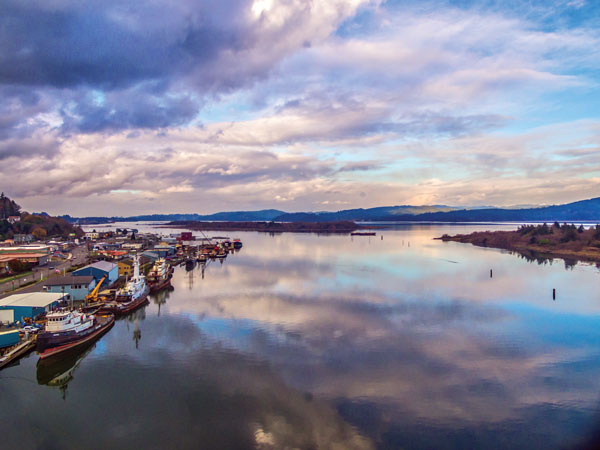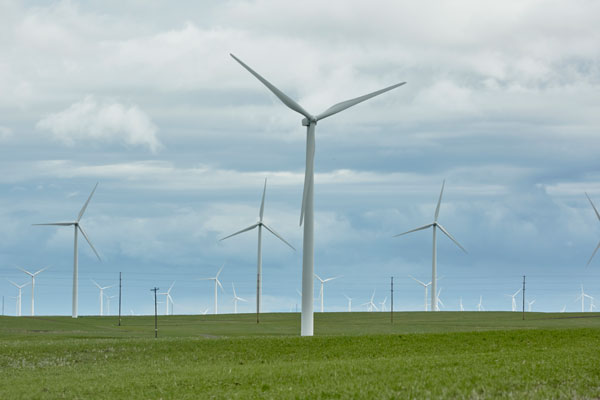Oregon’s coast will soon be powering homes and businesses across the Pacific Northwest.
In April, the U.S. Department of the Interior’s Bureau of Ocean Energy Management (BOEM) proposed an auction for developers interested in acquiring floating offshore leases off the coast of Coos Bay and Brookings in Southern Oregon. Covering nearly 195,000 acres, the agency estimates that this area could potentially generate enough energy to power over 1 million homes.
Onshore wind is currently the second largest zero carbon-emitting electricity resource in Oregon. According the U.S. Energy Information Administration, wind energy produced up to 15% of the state’s total electricity net generation in 2023, with almost 4,000 megawatts of installed wind-powered generating capacity.
“Offshore wind is likely to play an important role in meeting our state’s growing energy demand and goal of 100% renewable energy by 2040,” said Governor Tina Kotek. “It also presents a significant economic development opportunity for the Oregon coast. As BOEM moves forward with establishing a federal offshore wind leasing process this year, Oregon is committed to developing a robust and transparent state roadmap to inform offshore wind opportunities. This state roadmap will also ensure that coastal communities and Tribal nations are consulted throughout the process, in close coordination with BOEM.”
Prior to this announcement, Gov. Kotek signed House Bill 4080A into law, which ensures the development of an offshore wind roadmap that engages with developers and impacted organizations, communities and tribes to consider all possible impacts.
“Bringing offshore wind to Oregon’s coast must be done correctly, which means including strong workforce equity provisions, robust labor standards and ensuring that labor, conservationists, tribal leaders and a diverse community of stakeholders are engaged to explore the impacts and benefits of offshore wind development. Today’s framework moves Oregon forward through careful planning and partnership.”
— Ranfis Giannettino Villatoro, State Policy Manager, BlueGreen Alliance OregonDepartment of Energy
“House Bill 4080A is a blueprint on what is possible when you move at the pace of partnership rather than a race to be first,” said BlueGreen Alliance Oregon State Policy Manager Ranfis Giannettino Villatoro in a press release. “Bringing offshore wind to Oregon’s coast must be done correctly, which means including strong workforce equity provisions, robust labor standards and ensuring that labor, conservationists, tribal leaders and a diverse community of stakeholders are engaged to explore the impacts and benefits of offshore wind development. Today’s framework moves Oregon forward through careful planning and partnership.”
 The Coos Bay Wind Energy Area is 61,204 acres and is located 32 miles from shore.
The Coos Bay Wind Energy Area is 61,204 acres and is located 32 miles from shore.
Photo: Getty Images
Leading the Charge
Onshore, the state’s efforts to build a network of clean energy resources have been expansive. With wind and solar farms dotting its picturesque landscape, Oregon is not only reducing carbon emissions but paving the way for groundbreaking advancements in clean technologies.
Following a competitive nationwide search, the Pacific Northwest Hydrogen Association was selected by the U.S. Department of Energy to lead one of only seven regional hydrogen hubs. Spanning across Oregon, Washington and Montana, the PNWH2 Hub will leverage the strength of each state’s renewable energy resources and technology companies to accelerate the production and use of clean hydrogen.
“Oregon has long been a leader in clean, renewable energy production,” said Gov. Kotek. “This transformational opportunity to accelerate development of the nation’s clean energy economy is tailor-made for the Pacific Northwest, where a proud tradition of technological innovation and collaboration in taking on bold challenges is in our nature. I am grateful for this exciting investment from the U.S. Department of Energy and the Biden Administration.”
Led by a network of state, tribal, union, business and industry, and university representatives, this hub has announced that it will primarily be focused on decarbonizing the region’s hard-to-electrify heavy-duty transportation, long-duration energy storage, ports, agriculture and industrial operations. To support these efforts, the PNWH2 hub is eligible to receive up to $1 billion in DOE funding over the next nine years and is anticipated to create more than 10,000 direct jobs.
“With this investment, the Pacific Northwest will be able to develop a new clean hydrogen economy that will create local jobs and build on the region’s long history of supporting clean energy resources.”
— Janine Benner, Director, Oregon Department of Energy
“With this investment, the Pacific Northwest will be able to develop a new clean hydrogen economy that will create local jobs and build on the region’s long history of supporting clean energy resources,” said Director and PNWH2 Board Vice Chair Janine Benner. “We can seize this opportunity to ensure an equitable clean energy transition that invests in local communities across the region.”

